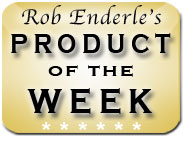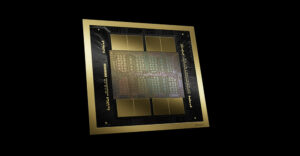
The Windows 8 launch in October promises to be like no other launch. I think it will drive home several points that many of us don’t seem to understand, like the fact that we both whine there isn’t enough innovation and run for the hills when someone innovates in a mature market. I think Microsoft will change a lot after this launch, and as a result, the PC ecosystem will be dramatically different next year.
This launch will put Nvidia and Qualcomm more solidly into the PC spotlight and likely put far more pressure on Intel and AMD. It will also slam the most creative marketing team Microsoft has fielded since Windows 95 against the most difficult marketing problem I’ve seen in my life — and I’ve been around for a while. The entire PC ecosystem, including Apple, is sweating this one. On top of all of this, Nokia’s future will be closely tied to the release of the Windows 8 product that will ship at the same time. In short, Microsoft’s client future — all of it — may be tied to what happens next quarter.
I’ll go further into that and close with my product of the week: a tablet that — for me — may be the perfect alternative to an iPad.
The Core of the Windows 8 Problem Is Us
This is the kind of thing that can drive a product manager, marketing officer, or analyst (like me) nuts. You see we all — I mean users here — complain that every new product looks a lot like the product that came before. New releases are increasingly boring and don’t seem very innovative. We pound on companies ranging from Microsoft to Apple, claiming they are losing their innovation mojo.
I mean, look at the Mac OS. It really hasn’t changed that dramatically since it launched, and it still is on version 10 and been there for a decade. Apple went through the nine previous versions in a little more than the same time.
What’s the most successful of the Apple iPhone competitors? The Samsung Galaxy II running Android, which is the phone that just got nailed for being a knockoff of the iPhone. How about the most successful non-iPad tablet? It’s the near-exact copy — I could argue it actually looks better — of the iPad 2, the Samsung Galaxy Tab, which also was found to be too close to Apple’s product.
What is the phone that is the most different? Probably Windows Phone 7, which was designed to address all of the complaints surrounding the iPhone and the Android copies. The user experience is arguably better, but it is vastly different — and the result is that almost no one (except a few folks like me) carries it.
Even if you look at the iPad’s success, it was the result of Steve Jobs getting us to see it as a new category rather than a netbook with a touchscreen and no keyboard, which is what it actually was. Had we seen it as a cheap, crippled Mac with a different UI, I doubt he would have sold more than a few thousand. Now that it is established, if any major change were introduced — even by Apple — we would likely vote with our feet that we didn’t want it.
So for all of the change we scream, beg, and argue for, we are incredibly dishonest, because we really don’t like change. This will be the biggest problem for Microsoft to overcome for both Windows 8 and Windows Phone 8. Even Steve Jobs never attempted something like this, and he was unmatched in doing product launches.
The Complexity Problem
Complex launches are very, very hard to do. This is why Apple launches one product at a time if it has the choice. It has separated the launch of the iPhone 5 from the iPad mini by a month so it can focus buyers on each product individually, because we are easily confused. Microsoft will be launching new laptops, tablets, all-in-ones, desktops, and smartphones in the same window. This is typically called a “big bang” launch, and this will be one of the biggest.
Now Microsoft has reduced some of the traditional component complexity that has historically resulted in a lot of initial breakage — at least with new hardware — by setting hard specifications. So you shouldn’t see major issues with any drivers on new hardware.
However, with existing hardware, virtually all of it is noncompliant with the full specification set, and it has far more complexity than what is being allowed in new hardware.
I really am recommending that only folks who have a tolerance for pain upgrade to Windows 8 in place and only do so if they have a good USB multitouch touchpad or one built on their laptop. Even then they may experience driver issues, so I’d suggest waiting until you can confirm someone has done this on your kind of hardware successfully.
I expect most upgrade problems will be with laptops, because most laptop pointing devices are noncompliant in that they don’t support five-finger touch, aren’t mounted flush, or aren’t big enough to be used with Windows 8. Attaching an external touchpad to a laptop is problematic, which is why I favor desktop hardware for the initial upgrades.
Even the touchscreens in market are likely noncompliant. Most are resistive, which makes them slow, and Windows 8 (outside of military products that have to support folks wearing gloves) will work best with capacitive touch — the rarer, more expensive option.
Deciding between Windows 8 and Windows RT tablets won’t be easy. The user experience and price should be better with Windows RT, but Windows 8 will provide for better legacy support. Personally, I think Windows RT by itself would have launched well with Windows Phone 8 and could have shown up earlier, but that’s not the way this is being done.
Finally, there is Windows Phone 8, which will represent the first time this platform has had hardware designed specifically for it. It should be far stronger than Windows Phone 7 but may get lost in the noise of the Windows 8/RT launch.
Wrapping Up: Legendary Launch
This is, by some significant magnitude, going to be the most difficult high-profile launch I’ve ever seen attempted. It is rumored to have a launch budget of more than $1 billion, making it also the most expensive, if these rumors are to be believed.
If Microsoft pulls this off, it will be in the record books for having done something that Apple couldn’t do. On the other hand, if it doesn’t, this could eclipse the Edsel as the most expensive failure in the history of any market. So, however this goes, it will go down in the history books and be remembered for all time.
It’s going to be one hell of a fourth quarter.
Product of the Week: Panasonic ToughPad Tablet Computer

My problem with tablets — and this includes all of the Android tablets, the iPad, and the Kindle Fire — is they suck outdoors and they are relatively fragile. Tablets are attempting to do things like replace books and magazines, which you read in bathtubs, on the beach, or outside on a lawn, and they suck in all of those places.
An accidental drop or a little sand or water will turn them into a doorstop, and their displays wash out outdoors. If you want to use one to doodle or draw, their screens are generally not accurate enough — and even if they were, they typically don’t come with anything to draw with.

The Panasonic ToughPad (there’s even a 7-inch mini version coming), while much more expensive than an iPad, addresses all of these problems.
It is semi-hardened so it will survive drops or getting wet, and it will shrug off sand. It has a high nit (very bright) non-glare display for outdoor use, so it will work well everyplace except in the brightest of direct sunlight — and even there you can still see the screen — and it comes with a built in stylus you can use for drawing.
Besides the display, it has some other decent features that the iPad lacks. It has built-in 4G with a hotspot router that lets you connect your friend’s iPad to the Internet, a MicroSD slot for memory expansion, and a micro HDMI to connect to a display or TV. And, of course, it is military specification certified.
Until a product ships in the U.S. with a transflective display — like the Qualcomm Mirasol (apparently now shipping in Asia) — and is hardened to boot, the Panasonic ToughPad is my own gold standard for a tablet. I like being outside, and that makes the Panasonic ToughPad my product of the week. This is the product the guys in The Expendables (fun movie by the way) would likely carry.






















































